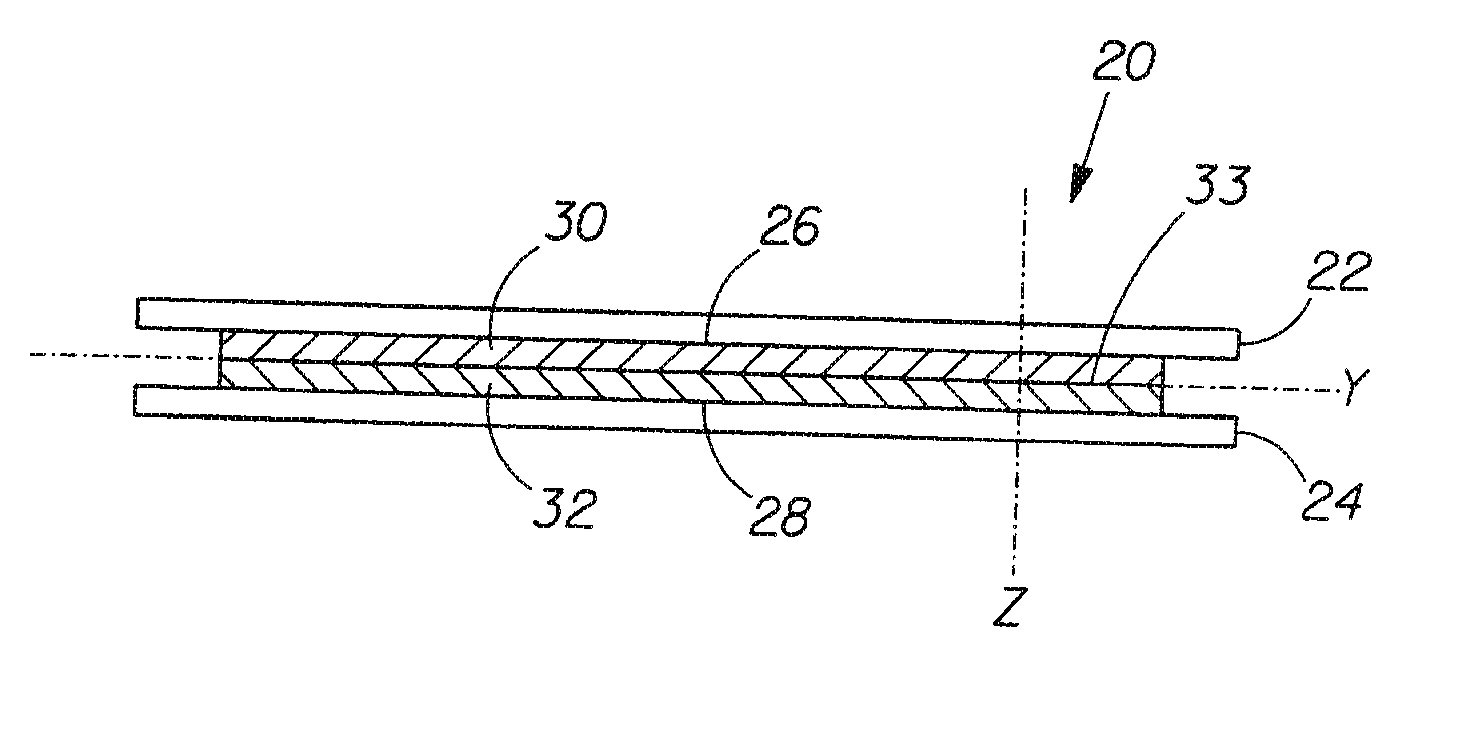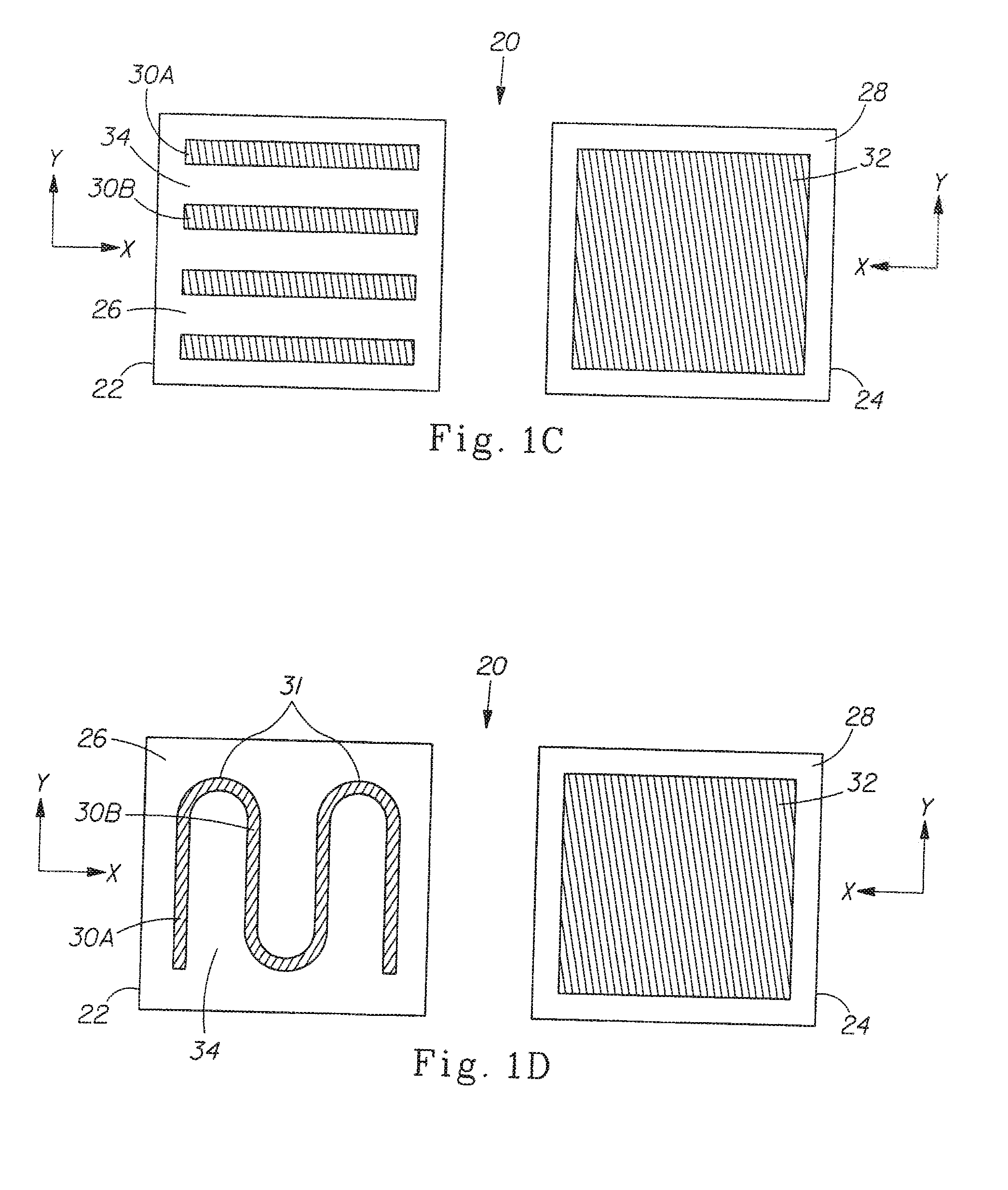Non-Tacky Adhesive Fastening System
a non-tacky, adhesive technology, applied in the field of consumer goods, can solve the problems of skin irritation, the fastener in these systems may have a tendency to attach to undesired surfaces, and the system also has significant effects, so as to improve versatility, fit, and refastening performance.
- Summary
- Abstract
- Description
- Claims
- Application Information
AI Technical Summary
Benefits of technology
Problems solved by technology
Method used
Image
Examples
examples
[0216] Various materials were tested to determine the resulting T-Peel force when two opposing planar surfaces were uniformly coated with different adherent / adherend combinations. Samples of the combinations were tested according to the T-Peel Test Method, and the resulting peel forces (in N / cm) for the combinations are summarized in Table 1. The samples were aged at a temperature of 60° C. and under 0.8 N / cm2 pressure prior to testing. The samples were aged for durations of 6 hours, 3 days, and / or 1 week, as indicated in Table 1. The reported peel force is an average from at least 3 samples. Absence of an entry in Table 1 indicates that the particular adherent / adherend combination was not tested.
[0217] The materials in the following examples are referenced by the acronyms provided below.
[0218] D1102: Kraton® D1102 is available from Kraton Polymers, Houston, Tex. D1102 is a styrene / butadiene / styrene triblock elastomer (16% diblock and 28% styrene). D1102 is extruded to form about ...
examples 1-4
[0230] For Example 1, test samples including a D1102 NT adherent and a PET NT adherend, both uniformly applied to planar test surfaces, were prepared and analyzed. The D1102 adherend is supplied in pellet-form and was extruded into about a 76 μm (3 mil) thick film. The D1102 adherent is a styrene / butadiene / styrene triblock elastomer having 16% diblock, and 28% styrene. The weight average molecular weight of the D1102 adherent was determined to be 71 kDa (determined by gel permeation chromatography using polystyrene standards in tetrahydrofuran). The D1102 adherent has a supplier-reported melt flow rate of 6 g / 10 min (as measured by ISO method 1133 at the conditions of 200° C. / 5 kg).
[0231] Test samples for Example 2 were prepared in the same way as Example 1, except that the oPA54 NT adherend was used in place of PET.
[0232] Test samples for Example 3 were prepared in the same way as Example 1, except that the oPA40 NT adherend was used in place of PET.
[0233] For Example 4, test sa...
examples 5-6
[0238] For Examples 5 and 6, test samples including a 4211 NT adherent and a oPA40 NT adherend, both uniformly applied to planar test surfaces as films, were prepared and analyzed. Both examples were tested according to the T-Peel test (after being aged for 3 days and at a temperature of 60° C. under 0.8 N / cm2 pressure) to determine the peel force required after the first engagement (i.e., prior to any refastening) and after the first refastening of the adherent / adherend system. For Example 5, no simulated contamination procedure was used prior to the T-Peel test. For Example 6, the simulated contamination procedure was used to contaminate both the adherent and adherend surfaces after the first engagement, but before the first refastening.
[0239] Table 6 provides the comparative results for the simulated contamination procedure. The T-Peel forces represent an average from 4 samples. As is apparent from Example 6, human fingers can contaminate and drastically reduce the adhesive effe...
PUM
| Property | Measurement | Unit |
|---|---|---|
| Temperature | aaaaa | aaaaa |
| Pressure | aaaaa | aaaaa |
| Time | aaaaa | aaaaa |
Abstract
Description
Claims
Application Information
 Login to View More
Login to View More - R&D
- Intellectual Property
- Life Sciences
- Materials
- Tech Scout
- Unparalleled Data Quality
- Higher Quality Content
- 60% Fewer Hallucinations
Browse by: Latest US Patents, China's latest patents, Technical Efficacy Thesaurus, Application Domain, Technology Topic, Popular Technical Reports.
© 2025 PatSnap. All rights reserved.Legal|Privacy policy|Modern Slavery Act Transparency Statement|Sitemap|About US| Contact US: help@patsnap.com



